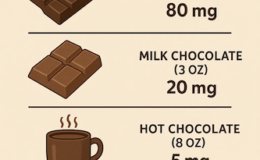Did Your Baby Pass “Sheep Droppings”? Don’t Panic—Here’s What You Can Do
- By : Jessica Jiayi W
If your baby’s stool looks like tiny, hard balls—often referred to as “sheep dung” or “pellet-like stools”—you’re not alone. Many parents encounter this issue, and while it can be concerning, it’s usually manageable with the right approach. So, what causes this kind of constipation, and how can you help your baby pass stool more comfortably?
Let’s explore the reasons behind it and effective strategies to ease your baby’s bowel movements.
What Causes Pellet-Like Stool in Babies?
1. Imbalance in Gut Microbiota
A baby’s intestinal health relies heavily on the balance of good and bad bacteria in the gut. Beneficial bacteria help:
- Break down food
- Support nutrient absorption
- Stimulate intestinal movement
When this balance is disturbed—often due to illness or antibiotic use—harmful bacteria can outnumber the good ones. This disrupts the fermentation process of food residues, causing excessive water absorption from stool and leading to dry, hard, ball-shaped feces.
For example, antibiotics may eliminate beneficial bacteria, which can result in constipation and other digestive issues.
2. Lack of Dietary Fiber (Cellulose)
Fiber acts like a “gentle broom” in the intestines. It:
- Adds bulk to the stool
- Promotes intestinal peristalsis (movement)
- Helps stool pass more easily
Many babies consume a diet low in fiber, especially if they avoid vegetables and fruits and eat mostly refined grains like white rice or white bread. Without enough fiber, food moves too slowly through the gut, and the body absorbs too much water, resulting in dry, compacted stools.
Can Drinking More Water Help?
It’s a common misconception that hard stools are simply the result of not drinking enough water. While hydration is important, water alone isn’t the solution.
Why?
- The moisture in healthy stool comes largely from the fermentation of fiber by gut bacteria—not just from the fluids a child drinks.
- Drinking too much water may fill up a baby’s small stomach, reducing appetite and nutrient intake.
- Excess water won’t necessarily reach the colon in the way you intend—it may just lead to more frequent urination rather than softer stools.
So while water helps, it’s not enough on its own—fiber and gut health are key players.
How to Help Your Baby with Pellet-Like Stools
✅ 1. Adjust the Diet: Add More Fiber-Rich Foods
Vegetables and fruits are excellent sources of dietary fiber:
- Vegetables like spinach, broccoli, and carrots can be steamed and blended into purees for younger babies. As chewing skills improve, transition to finely chopped or soft-cooked pieces.
- Fruits such as apples (rich in pectin), pears, and dragon fruit (pitaya) can help promote bowel movements. Offer apple puree or soft fruit slices as finger food.
- Be mindful of fruit sugar content, and offer in moderation.
Bonus Tip: For babies with a particularly low fiber intake, a pediatrician may recommend fiber supplements or lactulose syrup.
- Lactulose is a gentle stool softener. It works by being broken down by gut bacteria, which increases water in the stool and makes it easier to pass.
- Always use under medical supervision to avoid overuse or diarrhea.
✅ 2. Add Probiotics (When Recommended)
Probiotics can help restore gut flora balance, especially after antibiotic use or digestive disturbances. They increase beneficial bacteria, aiding digestion and stool softening.
Consult your pediatrician to select a probiotic suitable for your baby’s age and health condition.
✅ 3. Encourage Movement
Physical activity stimulates digestion and intestinal peristalsis:
- For non-walking babies: Encourage tummy time and crawling.
- For toddlers: Encourage walking, playing, and outdoor activities daily.
Movement keeps digestion active and supports regular bowel function.
✅ 4. Establish Healthy Toilet Habits
Start building a regular toilet routine:
- Set a consistent time each day, such as after meals, to encourage your baby to sit on the potty—even if they don’t go at first.
- Never force or pressure them. Creating a relaxed routine helps develop natural defecation reflexes over time.
When to See a Doctor
Most cases of pellet-like stool are dietary or gut-related and improve with lifestyle adjustments. However, seek medical attention if:
- The condition persists without improvement
- Your baby experiences abdominal pain, bloating, or vomiting
- There’s blood in the stool or signs of distress during bowel movements
These symptoms could indicate a more serious condition requiring professional evaluation.
Final Thoughts
Seeing “sheep dung” stools in your baby’s diaper may be surprising, but it’s usually a sign of dietary or digestive imbalance—not a major health issue. With a few simple adjustments—like adding fiber, supporting gut health, and encouraging movement—you can help your baby return to comfortable, regular bowel habits.
And remember: When in doubt, always check in with your pediatrician. A happy tummy makes for a happy baby!


